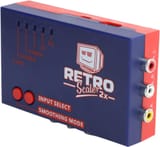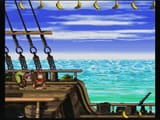>>11841098 (OP)>I bought a cheapo composite to HDMI converter and my image looks like pic related.Garbage in, garbage out. You can't get information where it does not exist, the better signal you put into an upscaler, the better the result.
Also, the better the upscaler the better the result. You are NOT going to get a good image plugging a composite cable into a cheapass upscaler, that's cutting pretty much every corner you can.
>Give it to me straight, how much do I need to spend to get an accurate picture?Depends on the system and how close you want to replicate a CRT. None of them will let you play light-gun games just so you know without a whole additional mess to deal with. As for what it would cost, depends if you can easily get an RGB signal out of the console or if that would require additional mods. Many systems CAN output RGB natively, you just need a cable for it, though the NES and N64 can't and need hardmods (and later N64 systems an even more complicated hardmod) otherwise even $750 upscalers can only do so much from a composite input.
And of course it depends on if you just want a semi-decent image or a super-close replication of a CRT image.
The budget option would be to make or buy a GBS-C. This used to be a DIY-only project that used a $20-ish board intended just for arcade cabinet repairs so operators could swap in an LCD in place of a broken CRT, but it was shit quality... until people found out that the hardware itself wasn't that bad and with a cheap audino and clock generator circuit it can become a fairly decent upscaler for a fraction of the price of what was on the market at the time. Recently Chinese resellers have been making pre-built versions of it, but it costs more than making it yourself if you can solder ok.
Next up would be the OSSC and Retrotink, though OSSC is getting a bit long in the tooth. The Retrotink 5X is the one most go for in this price range.
Cream of the crop would be the Retrotink 4K but it is very expensive





